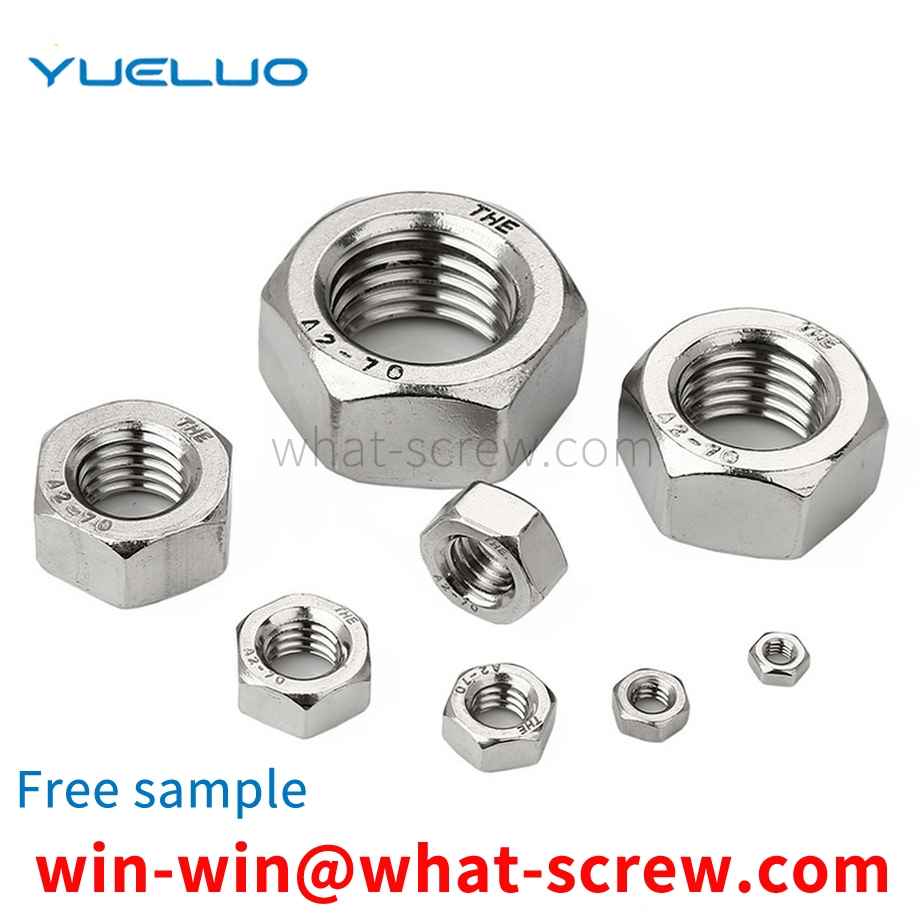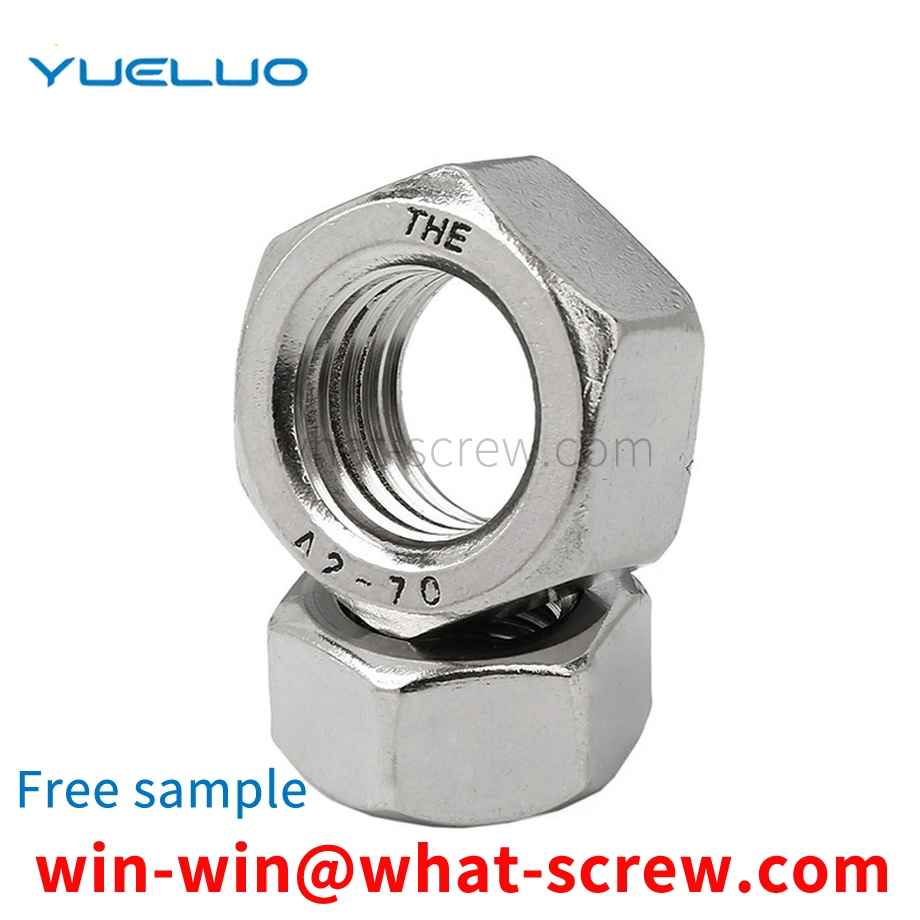Lock nut is a kind of nut widely used in machinery and other industries. Its working principle is self-locking by the friction between the nut and the bolt. However, the reliability of this self-locking is reduced under dynamic loads. In some important occasions, we will take some anti-loosening measures to ensure the reliability of the nut locking.
Building aluminum alloy formwork is a new type of building formwork, which conforms to the four sections and one environmental protection policy. It is economical, fast, high-quality and environmentally friendly. Its application is of great significance to building energy conservation and environmental protection. The aluminum template is filled with aluminum template pins. However, the pins in the prior art have low connection strength during use, which is likely to cause the hole to be repaired weakly.
The main purpose is to make industrial products form a fixed one. In use, it often occurs that the teeth cannot be closely attached, and the screw heads are broken if they are locked too hard, or the teeth are not locked tightly and fail to meet the conditions of use, all of which are accuracy problems. . Screws are mass products, not hand-made works of art. In mass production, they are supplied to consumers in order to achieve high precision, stable quality and popular prices. The accuracy of screws is usually 6g (class 2, the American standard IFI is 2A teeth), and the rough screws used in construction projects are 8g (class 3, IFI is 1A teeth). Common types of screws Screw A: Machine Screw: Machine screw B: Tapping Screw: Self-tapping screw (for metal and plastic) B-1: Sheet Metal Tapping Screw. (Iron die self-tapping screw) B- 2: Plastic Tapping Screw. (for plastic, self-tapping screw) C: Wooden Screw : Woodworking screw D: Drywall Screw : Cement wall screw E: Self Drilling Screws (stainless steel drilling screw, composite material drilling screw) F : Expansion screw, four-piece expansion screw, also known as: four-piece gecko. The grades of expansion bolts are divided into: 45, 50, 60, 70, 80. Materials of expansion screws: mainly austenitic A1, A2, A4, 1 stainless steel plate, metal steel plate, galvanized steel plate, engineering installation. 2. Indoor and outdoor installation of metal curtain wall and metal light compartment. 3 Generally, angle steel, channel steel, iron plate and other metal materials are combined for installation. 4. Assembly engineering of car boxes, container boxes, shipbuilding, refrigeration, screw machine equipment, etc. Features: 1. Drilling and tapping, locking is completed at one time, and the bonding force is strong. 2. Save construction time and improve work efficiency. E-1:STAINLESS STEEL SELF DRILLING SCREWS E-2:Bi-Metal Self Drilling Screws Common materials of composite drilling screws a.Low Carbon Steel: carbon steel carbon steel is divided into low carbon steel, medium carbon steel, high Carbon steel and alloy steel. b. SS-304: Stainless Steel 304 and 316 belong to stainless steel c. SS-302: Stainless Steel 302: better structural toughness d. Aluminum 5052: Aluminum alloy 5052 d. Brass: Brass e. Bronze: Bronze f . UNS C11000 Copper: Antimony Copper
Anti-corrosion technology Stainless steel screws are made of metal, and there are four main methods for metal anti-corrosion, namely the properties of the material itself, the environment of use, the interface between materials and the environment, and the improvement of the metal structure design. If a complete anti-corrosion alloy is used to make stainless steel Screws, unless there is a special need, are not cost-effective in terms of economics, and it is also impractical to completely isolate the appearance of the screw from environmental elements that can cause corrosion. Improving the metal structure design can improve the influence of special circumstances under certain conditions, but the design of most stainless steel screws cannot be fully corrected, and its maintenance effect is not permanent, so this method cannot basically solve the problem, as long as it is on the surface. Top anti-corrosion, that is, surface anti-corrosion treatment is the most widely used method. The anti-corrosion treatment on the surface of stainless steel screws refers to the use of various methods to apply a protective layer on the metal surface. The purpose of avoiding or mitigating corrosion. The protection layer should be able to meet the following requirements: 1. Corrosion resistance, wear resistance, high hardness, 2. The structure is tight, intact, and the pores are small. 3. It has strong separation and good adhesion with the base metal. 4. It is evenly distributed and has a certain thickness. The maintenance layer is usually divided into two types: metal coating and non-metallic coating. Metal coating refers to the use of metal or alloy with strong corrosion resistance to form a maintenance layer on the surface of metal that is easy to corrode. This coating is also called plating. There are quite a few methods and varieties to produce metal coatings, the most common of which is electroplating, followed by molten metal immersion plating (hot dipping) and chemical surface treatment. Non-metallic coating refers to the use of organic polymer materials such as paint and inorganic materials such as ceramics to form a protective layer on the surface of metal equipment or parts. The protective layer can completely isolate the base metal from the environmental medium and prevent the base metal from corrosion due to contact. Corrosion is formed in the medium of stainless steel standard parts.
Several concepts about high-strength bolts 1. According to the specified performance level of bolts above 8.8, they are called high-strength bolts. The current national standard only lists M39. For large-size specifications, especially those with a length greater than 10 to 15 times High-strength bolts, domestic production is still short-term. The difference between high-strength bolts and ordinary bolts: High-strength bolts can withstand larger loads than ordinary bolts of the same specification. High-strength outer hexagon bolts High-strength outer hexagon bolts are made of Q235 (ie A3). The material of high-strength bolts is 35# steel or other high-quality materials, which are heat-treated after being made to improve the strength. The difference between the two is the difference in material strength. From raw materials: High-strength bolts are made of high-strength materials. The screws, nuts and washers of high-strength bolts are all made of high-strength steel, such as No. 45 steel, 40 boron steel, 20 manganese titanium boron steel, 35CrMoA, etc. Ordinary bolts are usually made of Q235 (equivalent to A3 in the past) steel. In terms of strength grades: high-strength bolts are increasingly used. Two strength grades are commonly used, 8.8s and 10.9s, of which 10.9 is the majority. The strength level of ordinary bolts is lower, generally 4.4, 4.8, 5.6 and 8.8. High-strength bolts High-strength bolts are viewed from the force characteristics: high-strength bolts apply pretension and transmit external forces by friction. Ordinary bolt connection relies on the shear resistance of the bolt and the bearing of the hole wall to transmit the shear force. When the nut is tightened, the pre-pressure is very small, and its influence can be ignored. In addition to its high material strength, high-strength bolts also exert a large amount of pressure on the bolts. The pre-pressure generates extrusion force between the connecting components, so that there is a large friction force perpendicular to the direction of the screw, and the pre-pressure, anti-slip coefficient and steel type directly affect the bearing capacity of high-strength bolts. According to the force characteristics, it is divided into pressure type and friction type. The calculation methods of the two are different. The minimum specification of high-strength bolts is M12, and M16~M30 are commonly used. The performance of super-large bolts is unstable and should be used with caution in design.
We have many years of experience in the production and sales of screws, nuts, flat washers, etc. The main products are: black high-strength bolts, hexagonal nuts with teeth, double-sided oblique printing washers, lifting ring joint screws and other products, we can provide you with suitable products for you fastener solutions.



















 Service Hotline
Service Hotline




